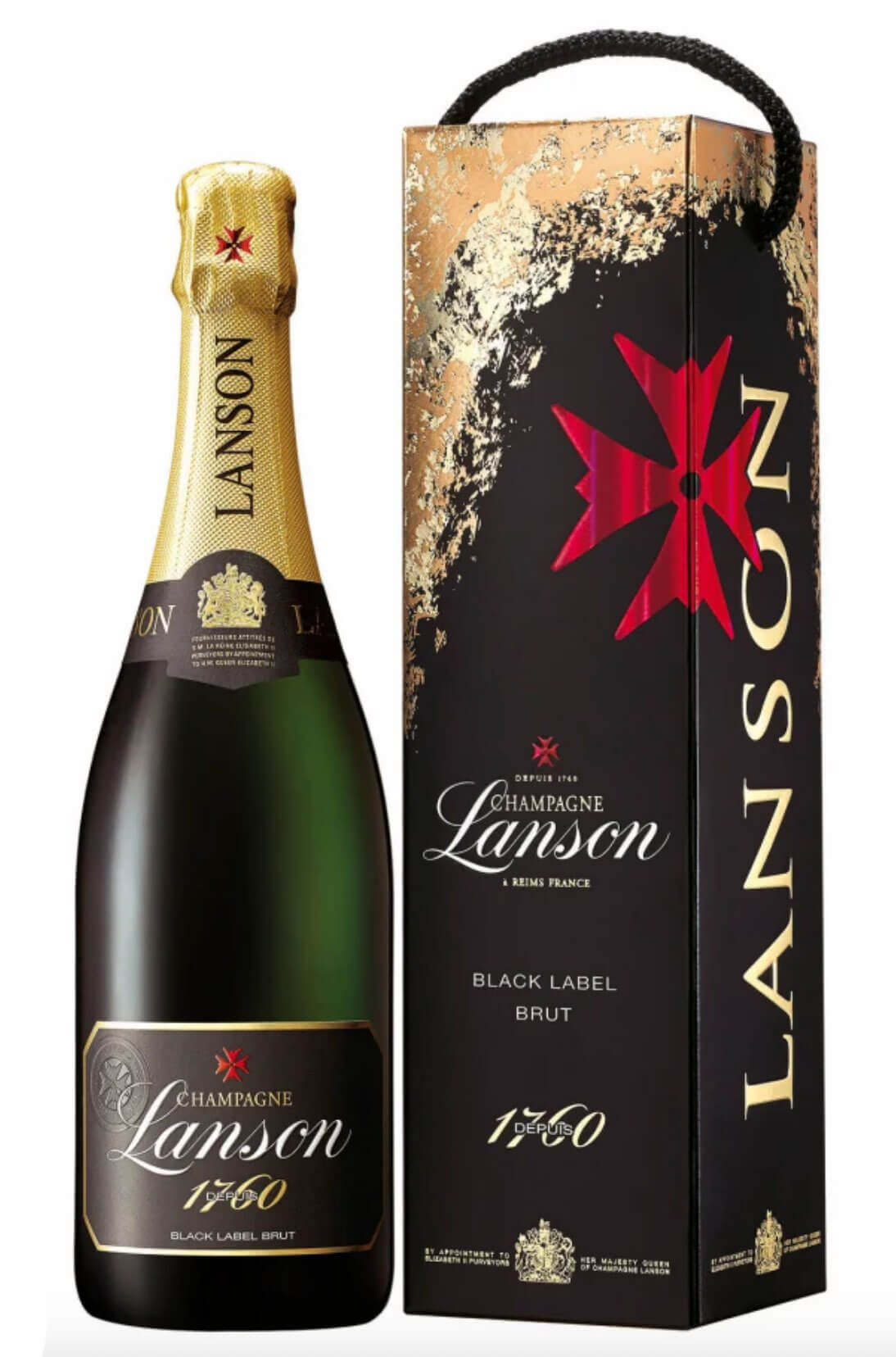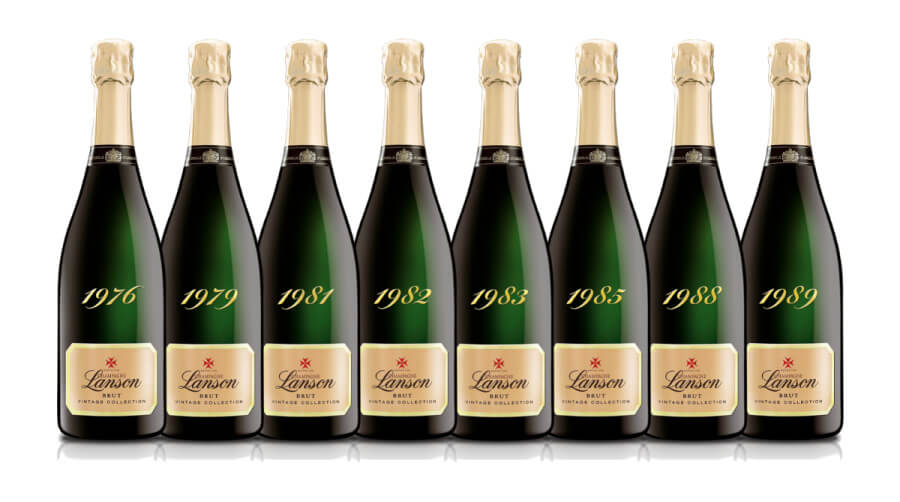by Ken Gargett
Few wine producers on this earth have proved themselves such extraordinary survivors as the famous old Champagne house Lanson. It has a long and illustrious history interspersed with speedbumps and detours that would have proved too much for most.
Instead, Lanson has steadily worked to overcome all obstacles. Few believed that it could or would succeed. Founded in 1760 by François Delamotte, a local magistrate, it started small and remained so for some time. Around 1830 Jean-Baptiste Lanson joined the firm, but the Delamotte family had a bad habit of regularly falling off the perch, and it was not long before Lanson was left on his own.
At least he had the good graces to wait until the last Delamotte departed before changing the name; Champagne Lanson was up and running. Nephews joined, and they set about a long period of purchasing quality vineyards, often against the local advice convinced that champagne was heading for some stormy waters.
Lanson survived both World Wars, although World War I destroyed the firm’s premises. Other hiccups, such as phylloxera (the notorious aphid that munched its way across European vineyards devastating the wine industry), the Great Depression and Prohibition, were all eventually navigated.
And through it all, Lanson continued to accumulate priceless vineyard resources. By the 1970s, it had vineyards with an average rating of 96 percent (the old eschelle system is no longer in operation but it does give an indication as to the quality of a vineyard, and 96 percent is a rating that would have been the envy of most), which were sufficient to provide almost half of the requirements.
Half may not sound a lot, but in Champagne, it is fabulous – many houses have no vineyards or very minimal resources. Most simply buy the vast majority of their grapes from the growers.
Lanson’s more recent history
Then started a game of “pass the champagne house,” which, when combined with severe discounting in certain countries, did nothing to enhance its reputation. Ricard purchased a significant interest in pre-Pernod days, later taken up by a company associated with family members, which in turn later also purchased Pommery. Around this time, Lanson did some purchasing of its own, buying the once-famous (as the old texts would have us believe) house of Masse.
This would be largely irrelevant except for a small plot of land, which we will get to.
Then, without warning, Lanson/Pommery was offloaded to a yogurt producer – granted, a large one – and then, in the early 1990s, Moët et Chandon pulled off a heist worthy of the Ocean’s Eleven movies (and please do not think ill of them for this – it was close to genius and has helped what is now LVMH establish itself as the major producer in the region).
Moët et Chandon swooped in and bought Lanson holus bolus, including more than 200 hectares of prime vineyards. Less than six months later, it sold Lanson but kept almost all of those vineyards (the exception seems to have been the tiny plot, just a hectare, Lanson picked up when it purchased Masse).
But the stroke of genius was that the sale price was, we are told, exactly the same price Moët et Chandon originally paid, even though it did not include the vineyards. I’m not really sure what the purchasers were thinking.
Lanson was left virtually bereft (there have been a few more corporate maneuverings, making it now part of the Lanson-BCC group), yet it has soldiered on. Chef de cave Hervé Dantan is doing a remarkable job maintaining its signature style with no malolactic fermentation, meaning that the wines are fresh, focused, offering bright acidity, and often very long-lived.
If you want a very well-priced champagne that will age immaculately, Lanson is the house for you.
Lanson’s wines
Lanson is making a fine range, though I have never, as yet, been able to get a look at a small-production wine made from that single, one-hectare plot of Chardonnay within walls opposite the Notre Dame de Reims Cathedral called Clos Lanson. One lives in hope.

Clos Lanson 2006 champagne
A clos in Champagne is a vineyard within a walled enclosure, although apparently the original rules insisted that the wall be high enough so that a man on a horse could not jump it.
The Lanson Black Label NV is always reliable without being stellar and can be aged, while the Gold Label Vintage is excellent value and certain vintages have shown just how well a properly cellared bottle of champagne can blossom.
The Green Label is a champagne made of certified organic grapes from bio-dynamically farmed vineyards in the Marne Valley, Pinot Noir dominant with contributions from other grapes (a death in the family saw the house of Leclerc Briant selling vineyards in 2010, and Lanson was one of the beneficiaries with 13 hectares, and as is usual with all except the Black Label and the Rose NV – worst label ever – there is no malolactic fermentation), offering a lovely mix of biscuity notes, honeycomb, and stewed pears.

Lanson 1760 Black Label champagne
The Extra Age Brut NV is a 60/40 blend of Pinot Noir and Chardonnay, the latest a blend of 2004, 2005 and 2006 wines, mostly from Grand Cru vineyards, which then spends ten years on lees.
The Clos Lanson aside, Lanson’s prestige cuvee is the excellent Noble Cuvee with its current vintage, the 2002 (AUD$210). Normally a blend of around 70/30 Chardonnay to Pinot Noir, the grapes are all from Grand Cru vineyards.
The 2002 is a brilliant vintage, and this is a wonderfully fragrant wine with notes of honey and rose petals over a slightly minerally note. Fresh, complex, and elegant. 96.

Lanson champagne vintage collection
Finally, Lanson puts its money where its cellar is and offers a range of wines with extensive ageing on lees before disgorgement. Many are in magnums. These mature superbly and can be thrilling wines.
A recent Collection 1985 in magnum (AUD$1,300) from a small but stellar vintage shows how well this program works. If your pockets are deep enough, you will not be disappointed. This champagne was disgorged in February 2018, so it has spent a very long time on lees – more than three decades, which is almost unheard of for a commercially available champagne (granted it is in extremely limited quantities and costs serious dosh).

Lanson champagne vintage collection 1985
It is mature and complex with nutty notes and hints of white chocolate. A touch of apricot and smoked pear, tobacco leaves, and truffle notes. Glorious. 98.
Lanson is well on its way to re-establishing its reputation as one of the very finest houses. It is a tribute to Dantan and his team, and a surprise to the majority of us who thought that the many difficulties it had encountered would prove insurmountable.
For more please visit www.lanson.com.
You may also enjoy:
Top Five Champagne Stories From 5 Years Of Quill & Pad: Cheers And Happy New Year
Charles Clavem Champagne: The Bottle Deserves As Much (Or More) Attention As The Wine
Louis Roederer Rosé 2012: A Gloriously Ethereal And Elegant Champagne
Bollinger RD 2004: When It Came To Champagne (And Much Else), Madame Bollinger Had Excellent Taste
Perrier-Jouët Belle Epoque Blanc de Blancs: One Of The Finest Champagnes I Have Ever Enjoyed





















































Leave a Reply
Want to join the discussion?Feel free to contribute!